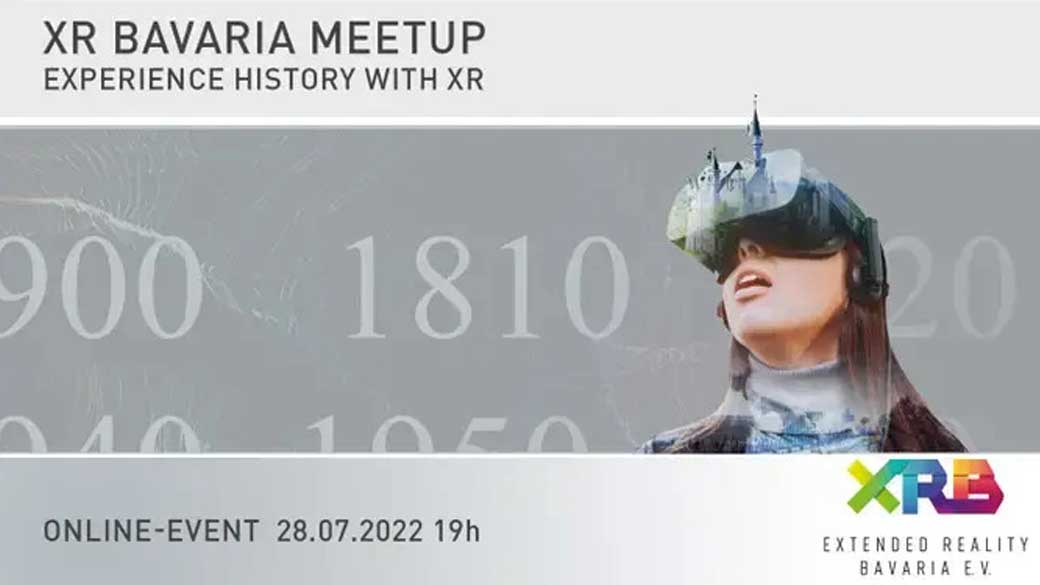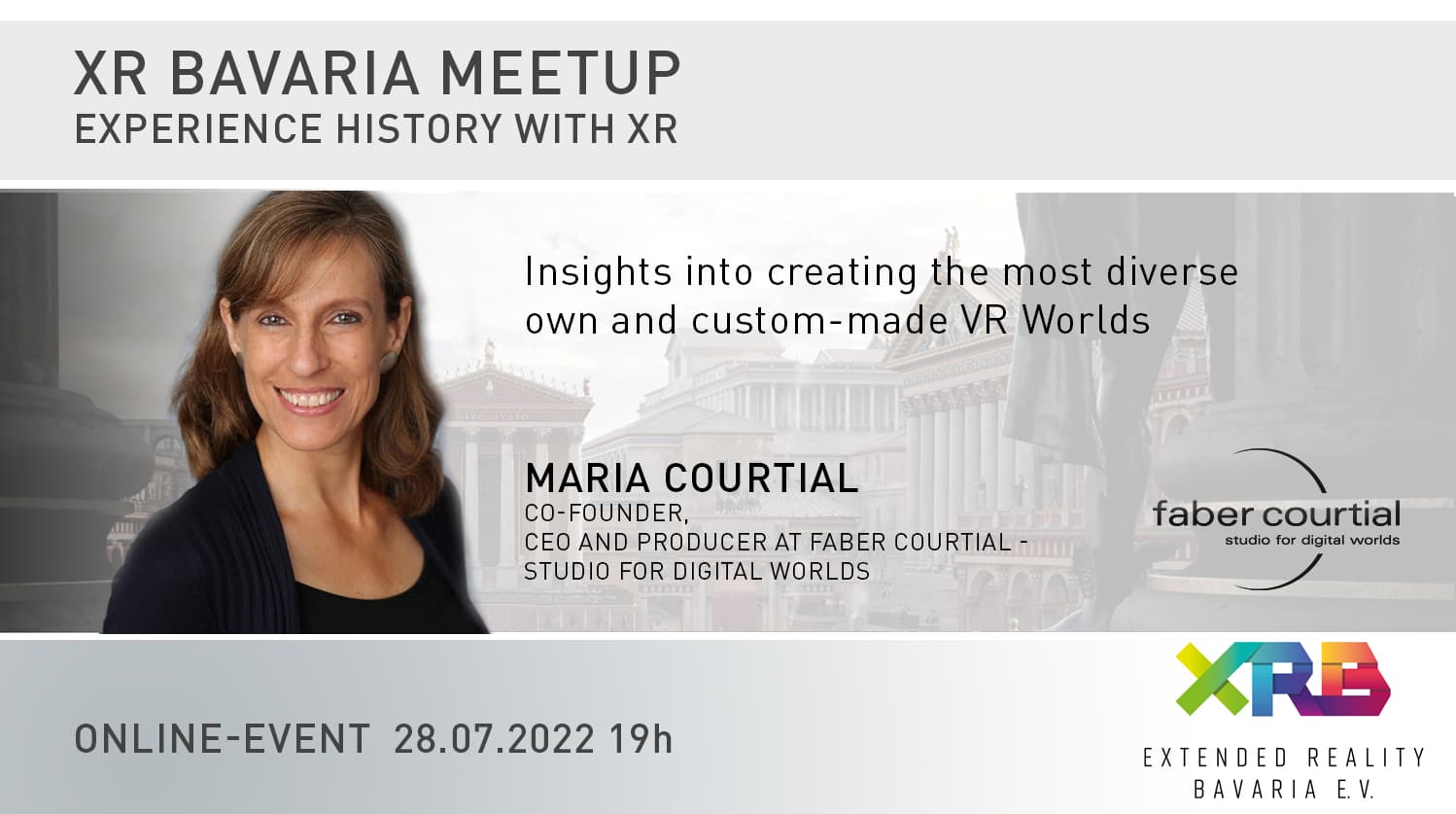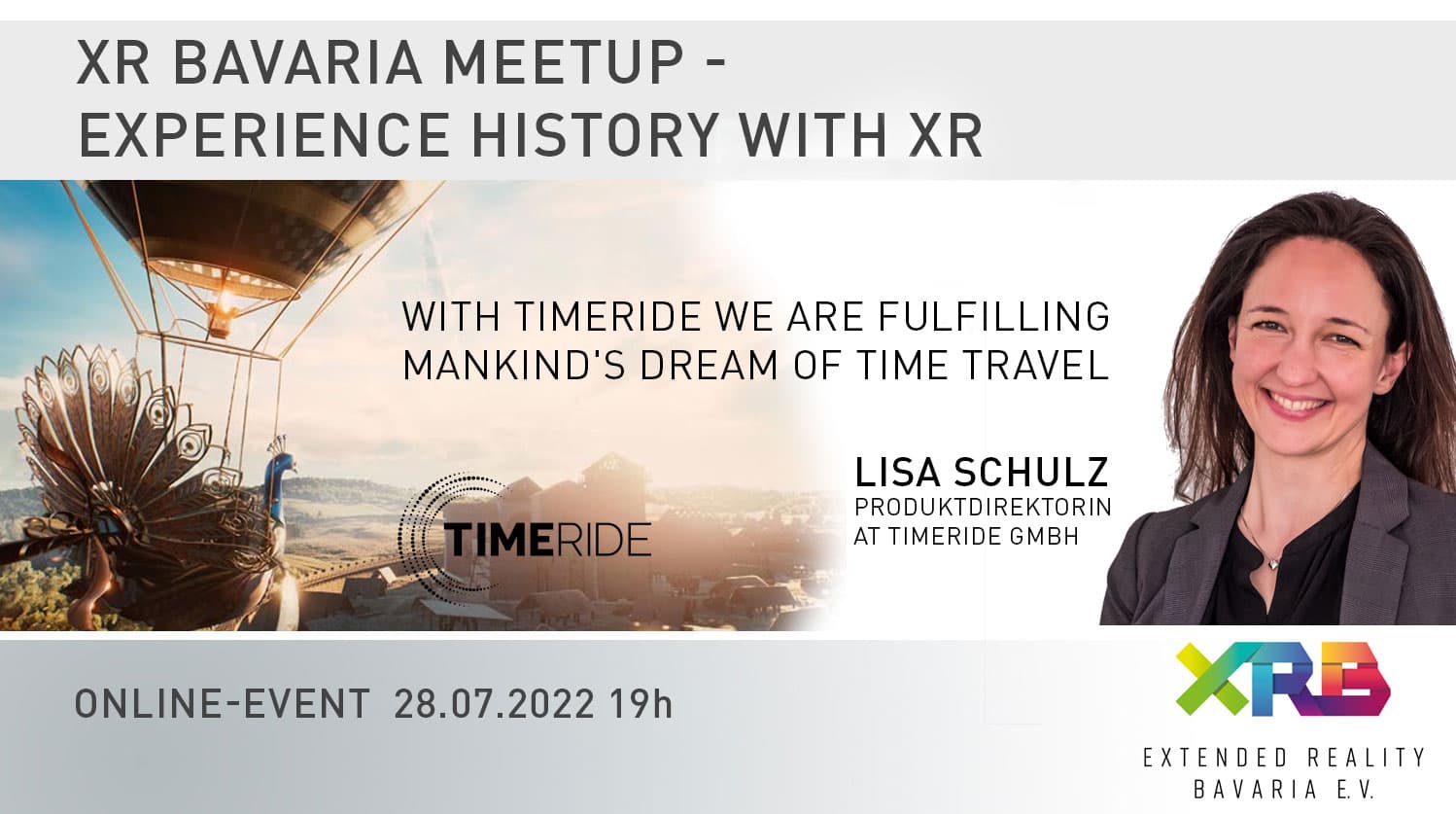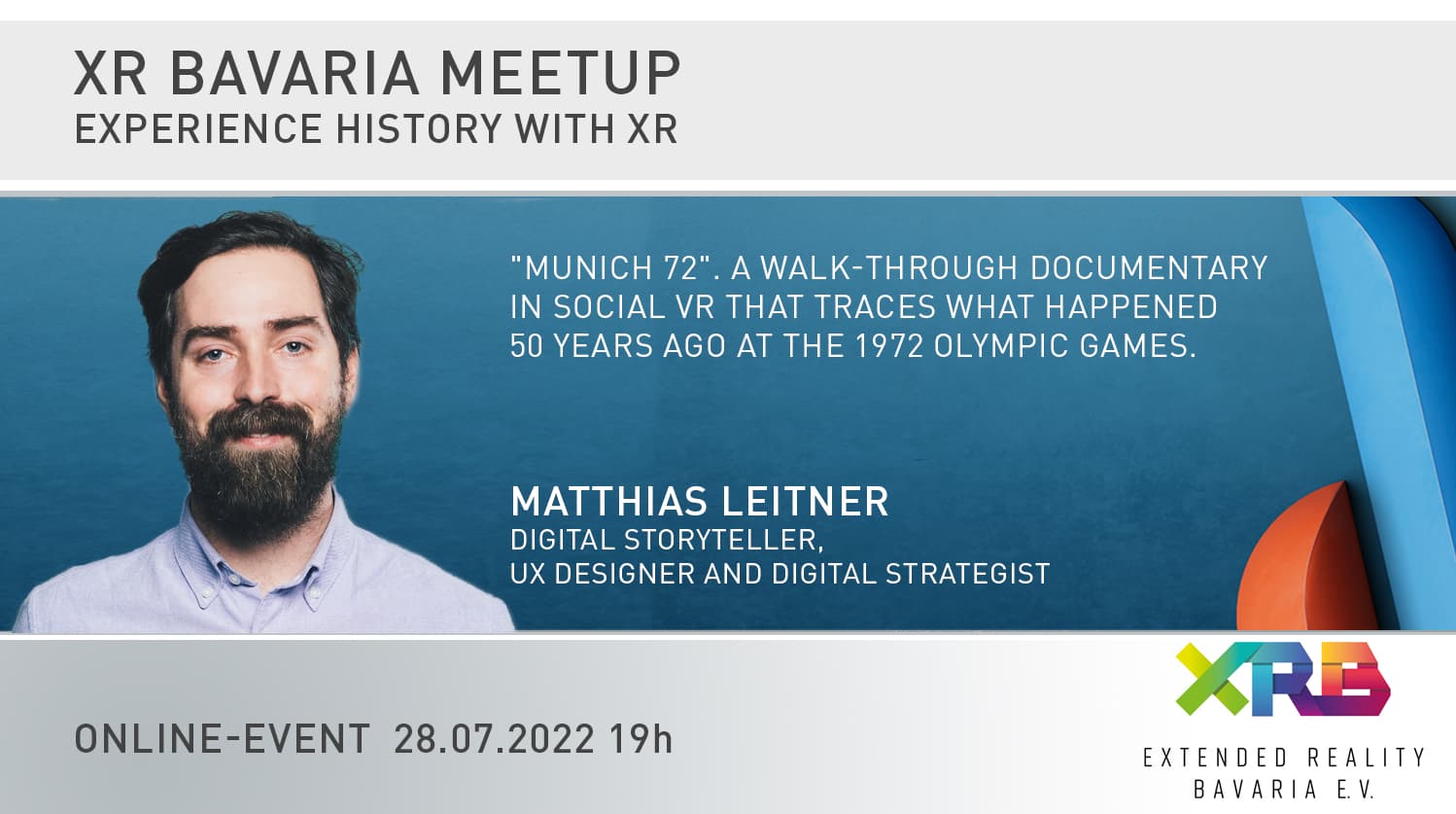
VR History: Virtual Reality – XR Bavaria Meetup
I had the great pleasure to organize an event on virtual reality history together with the XRBavaria that I’m also a board member of. The focus was not particularly spatial audio, but still I had a blast to moderate through the event and learned a lot. This is the follow-up report in case you missed it.
The history of virtual reality (VR) is deeply rooted in the evolution of immersive technologies, with early milestones including the development of artificial reality and the concept of the virtual environment—computer-generated spaces that simulate real or fictional worlds.
The field has been shaped by advances in computer graphics, which enabled the creation of early virtual environments, and by the continuous progress of vr development through key technological milestones. Foundational work in computer science has driven both hardware and software innovations, while powerful computer hardware has supported increasingly sophisticated VR systems.
Essential vr equipment, such as headsets, gloves, and vr goggles, has played a crucial role in enabling users to interact with immersive experiences. Display technology, including head-mounted displays, has been key to creating realistic and interactive virtual environments.
The influence of science fiction stories, such as Stanley G. Weinbaum’s 1935 story, predicted future VR concepts and inspired generations of researchers and developers.
Here is the trailer to get you more excited to keep on reading:
Let’s start with the first speaker:

Maria Courtial from Faber Courtial
Maria is the CEO, producer and sometimes co-director of Faber Courtial who are based in Darmstadt. Faber courtial is a company which has been producing virtual worlds for more than 20 years. They started with animation and special effects. Now they are moving to a new vocus on VR films and interactive experiences for already eight years.
They are choosing past and as well as non-existing worlds and making them experiencable very realistically with virtual reality. Faber Courtial specializes in creating computer generated environments that immerse users in culture, science, history, and entertainment. One could say that the ultimate target is to touch the user emotionally. Therefore, the content of their products are culture, science, history and entertainment.
Faber Courtial’s clients are public broadcasters, creators of special exhibitions and museums. Apart from that, they carefully kickstart promising projects on their own to be funded. It’s hard to make a decision where to start but Maria encourages to just get going with an innovative idea and prototype, which always requires appropriate programming to bring virtual experiences to life. In the field of virtual reality history – there is still much to discover!
Some of their projects are created in years and most of them in a few months. Nearly all of their production has been generated within the computer using VR and XR. Their images and shoots are from documentaries and museum exhibitions as well as using their own studio and a dedicated computer system to make shootings that secure the high quality of their films and manage virtual content.
To get to know more: https://faber-courtial.de

Lisa Schulz CPO, Timeride virtual reality
Lisa is the co-founder and chief product officer of TimeRide. Timeride’s vision is to come as close as possible to time traveling. They are using VR as their key technology to deliver the most immersive customer experience.
Guests will be sent back in time using modern technology, experiencing history in virtual reality like never before. Timeride offers a variety of vr applications for both education and entertainment, allowing users to engage with history in new and interactive ways.
Timeride started with their core product called Senseum, which is now supplemented by “Timeride Go”. Their mission is to let people feel the history with their own senses!
-
“Senseum” is an indoor attraction ( f.e. in Frankfurt) with rooms and VR headsets. Their biggest task in doing this attraction is to reconstruct the whole city as correctly as possible. This can include hundreds and hundreds of buildings, landmarks, and tourist attractions, resulting in the creation of detailed vr environments that allow users to explore historical settings.
-
“Timeride Go” is a guided city tour with a mobile VR headset. You are at a place in the city and as soon as you put on the glasses, you can see what the place looked like in the past. This mobile vr device enables these immersive experiences, so you are able to look into the history and can compare today and the past.
What will the future of virtual reality history feel like at Timeride?
-
more creativity and interaction are planned
-
more mobile applications from roller coasters to e-bus city tours
-
better hardware for VR and AR will be upgraded
-
In the end: Convergence of VR, AR, self-guided and audio guide
Give it a try and have a look at their homepage! https://timeride.de

Matthias Leitner, Munich 72
Matthias Leitner is a digital storyteller, UX designer, and digital strategist. He is working for different museums on his own tickets as well as the Bayerischer Rundfunk (BR). He presents a new project “Munich 72” innovated by Eva Deinert and him.
The Olympic games in Munich in 1972 can be relived in a VR experience. A walk-through documentary in Social VR that traces what happened 50 years ago at the 1972 Olympic Games. Eventually, the games were supposed to be cheerful. But on the 11th day, Palestinian terrorists take members of the Israeli team hostage.
So it’s a Social-VR experience that could be considered a “metaverse” approach. To get in touch with the virtual reality history environment an app called “VR Chat” is used. It works with a Windows PC and SteamVR. Additionally, it can be experienced with standard VR glasses or a vr hmd instead of the desktop application.
There you will be able to choose an avatar to walk through different scenes. The immersive experience is supported by advanced vr systems, which enable social interaction and a strong sense of presence within the virtual environment.
For the content, the team used original recordings from radio and television, and photos of the Israeli Olympic team and combined them with 3D objects from that time and placed them in a freely interpreted world.
As an innovative project, “Munich 72” demonstrates the potential of social VR experiences within the rapidly evolving vr market, highlighting how historical events can be explored using the latest virtual reality technologies.
If you want to try it, here is a detailed manual: https://www.br.de/extra/muenchen-72/index.html
Introduction to XR
Extended Reality (XR) is a broad term that brings together several immersive technologies, including virtual reality (VR), augmented reality (AR), and mixed reality (MR). These innovations are transforming how we interact with digital content and the physical world.
The history of virtual reality, a cornerstone of XR, stretches back to the mid-20th century. In 1968, computer scientist Ivan Sutherland and his student Bob Sproull created the first VR head mounted display, known as The Sword of Damocles.
This pioneering device laid the groundwork for the VR headsets we use today, such as the Oculus Quest and PlayStation VR. Over the decades, virtual reality technology has evolved from experimental prototypes to powerful tools for gaming, education, and therapy, offering users realistic simulations and immersive experiences that were once the stuff of science fiction.
Early Beginnings
The idea of virtual reality first appeared in the realm of science fiction, with Stanley G. Weinbaum’s 1935 story “Pygmalion’s Spectacles” describing a virtual world viewed through special goggles. This imaginative concept inspired inventors to bring such experiences to life.
In 1956, Morton Heilig introduced the Sensorama, an early VR system that delivered a multisensory experience with stereo sound, vibrations, and even scents, immersing users in a simulated environment.
The 1960s saw computer scientist Ivan Sutherland develop the Ultimate Display, a visionary concept for a virtual world viewed through a head mounted display that could be indistinguishable from actual reality.
The term “Virtual Reality” gained popularity in the 1980s, thanks to Jaron Lanier, and the first VR arcade machine, Virtuality, made its debut in 1991, bringing virtual worlds to a wider audience and marking a significant milestone in the history of virtual reality.
Development of Key Technologies
The evolution of XR has been driven by groundbreaking advances in technology. Head mounted displays (HMDs) have been at the heart of this progress, starting with the first motion tracking HMD, Headsight, developed in 1961 by Philco Corporation engineers Comeau and Bryan.
In the 1980s, VPL Research made significant contributions with the DataGlove, which allowed users to interact with virtual environments using hand movements, and the EyePhone, an HMD that created a virtual interface environment workstation.
The arrival of standalone VR headsets like Samsung Gear VR and Oculus Go made immersive experiences more accessible, eliminating the need for complex setups. Haptic feedback technology has further enhanced the sense of presence in virtual environments, enabling users to feel tactile sensations and interact more naturally with virtual objects.
These innovations in motion tracking, haptic feedback, and head mounted displays have paved the way for today’s advanced VR headsets and immersive XR experiences.
Applications of XR
XR technologies are making a significant impact across a range of industries, from education and healthcare to entertainment. In the classroom, VR headsets and immersive virtual environments are transforming learning by making abstract concepts tangible and interactive.
In healthcare, XR is being used for exposure therapy, helping patients with post traumatic stress disorder (PTSD) confront and manage their fears in a safe, controlled setting. The entertainment industry has embraced XR to deliver immersive gaming experiences, with devices like the HTC Vive and PlayStation
VR offering realistic simulations and interactive gameplay that transport players into entirely new worlds. As XR technology continues to advance, its applications are expanding, providing innovative solutions and experiences that were once unimaginable.
XR in Education
XR is revolutionizing education by making learning more engaging, interactive, and effective. With tools like Google Cardboard and Oculus Quest, students can participate in virtual labs, embark on virtual field trips, and explore interactive simulations that bring complex subjects to life.
These immersive experiences not only boost student engagement and motivation but also improve retention and understanding of challenging concepts.
As XR technology becomes more affordable and accessible, educational institutions are increasingly adopting it to provide students with innovative ways to learn and interact with information, preparing them for a future where digital and physical realities are seamlessly intertwined.
learn more about virtual reality